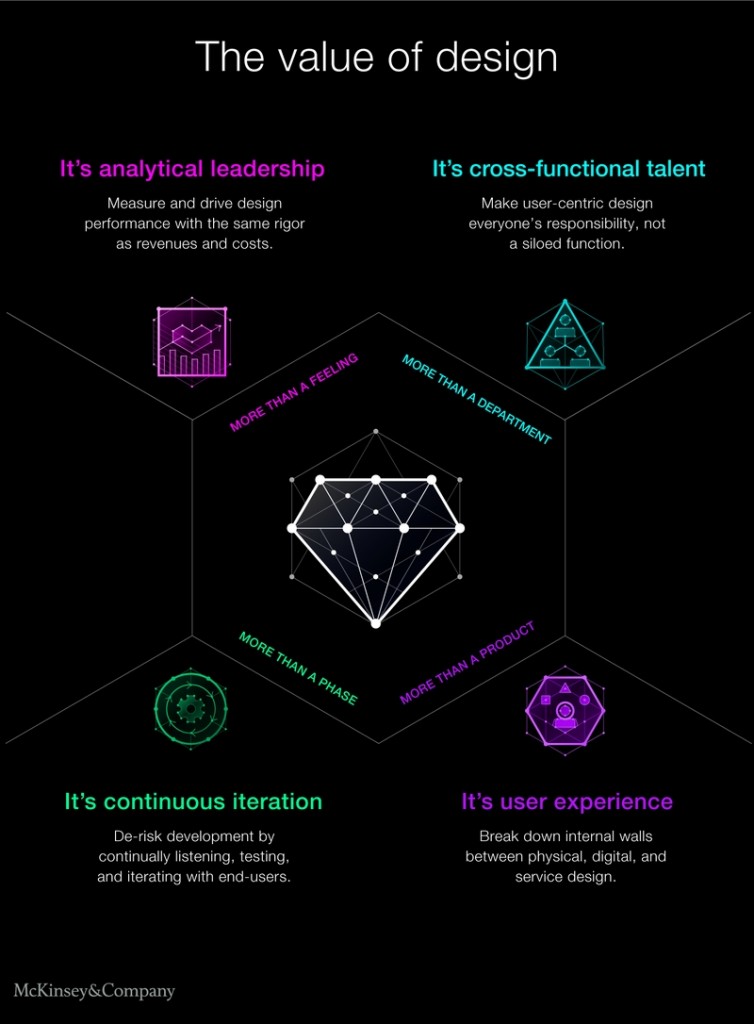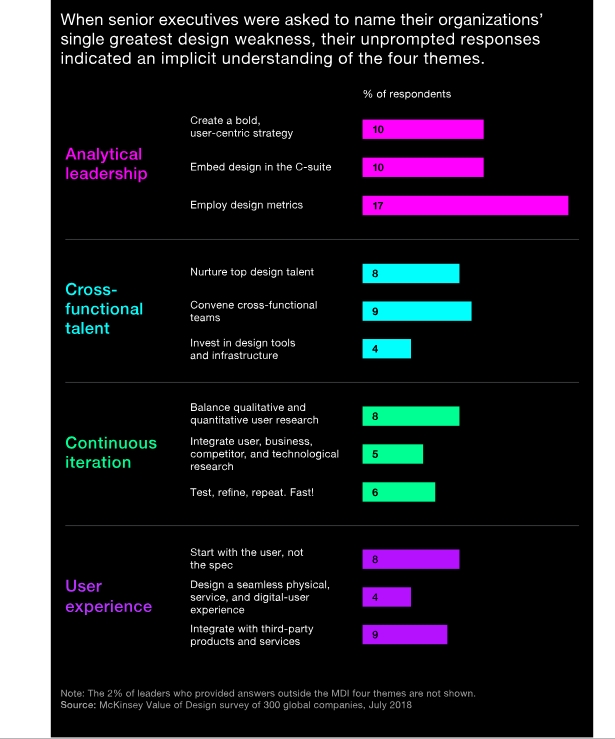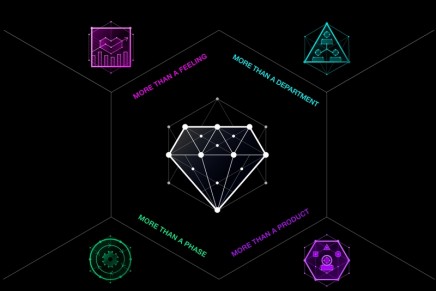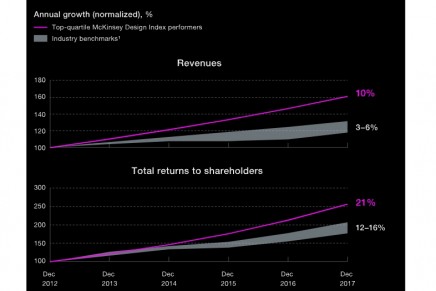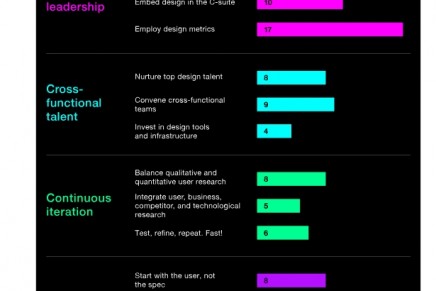Companies from a wide variety of industries consistently showed financial benefits from good design: from retail banking to medical devices to consumer goods. This suggests that companies that improve their design capability can improve their financial performance whether they are making physical products, digital apps, services, experiences or a combination of these things.
McKinsey & Company Releases World-First Study Quantifying the Financial Value of Design to Business
McKinsey & Company, the trusted advisor to many of the world’s most influential businesses and institutions, released its first-ever study on the business value of design. After tracking the design practices of 300 publicly listed companies in multiple countries and industries over a five-year period, McKinsey’s study is one of the world’s most rigorous in linking the financial value of design to business. The findings in this research show there are four sets of design actions that leaders can take to maximize their organization’s chances of designing products and services that delight customers, stand out from the crowd, and drive growth.
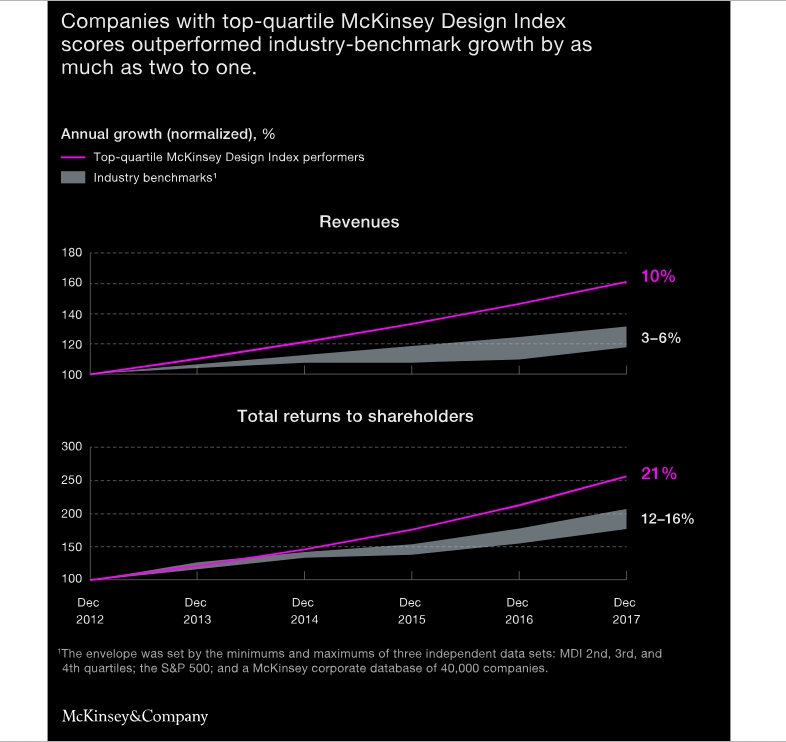
New study shows companies that excel at design see increased revenues and shareholder returns at twice the rate of industry peers; image: mckinsey.com
The research found a correlation between design best practices and financial performance.
Each company was given a single metric for its design performance: the McKinsey Design Index (MDI) score, which was based on hundreds of design actions they had taken. Those companies scoring in the top quarter of the MDI saw increased revenues and shareholder returns at nearly twice the rate of their industry peers on an annual basis. Over a five-year period, this resulted in 32 percentage points higher revenue growth and 56 percentage points higher shareholder return growth compared with industry peers.
McKinsey’s research found that shareholder return and revenue growth differences between the fourth, third, and second quartile MDI scorers were marginal. The market disproportionately rewarded top quartile companies whose design performance truly stood out from the competition.
“So how do companies deliver exceptional designs, launch after launch? What is design worth? To answer these questions, we have conducted what we believe to be (at the time of writing) the most extensive and rigorous research undertaken anywhere to study the design actions that leaders can make to unlock business value. Our intent was to build upon, and strengthen, previous studies and indices, such as those from the Design Management Institute.” note the authors of the research.
To better understand the design actions that unlock business value, McKinsey collected more than 2 million pieces of financial data and recorded over 110,000 design actions. Through their analysis, McKinsey uncovered the designactions that showed the strongest correlation with improved financial performance and clustered these into four sets of design actions.
“More than a feeling” embeds design analysis in the boardroom and C-Suite;
“More than a product” puts the customer experience front and center;
“More than a department” ensures design is every employee’s responsibility, not isolated to the design department; and
“More than a phase” emphasizes design-driven iteration, testing, and learning. In order to see financial benefit, itis important for businesses to be successful in all four sets of actions.
“If you are the CEO of a company it’s relatively easy to point out examples of individual products or services that have led to extraordinary value creation,” says Ben Sheppard, Partner, McKinsey & Company, London. “However it is notoriously difficult for companies to launch consistently great products and services time after time.”
The final results of the survey suggest that senior executives no longer have the option to treat design as a luxury. While design was once largely thought of as a way of making products more attractive, it is now a way of thinking: a creative process driven by the desire to better understand and meet consumer needs. The McKinsey Design Index reflects these beliefs while highlighting the power of great design—and the difficulty many companies have in achieving it.

